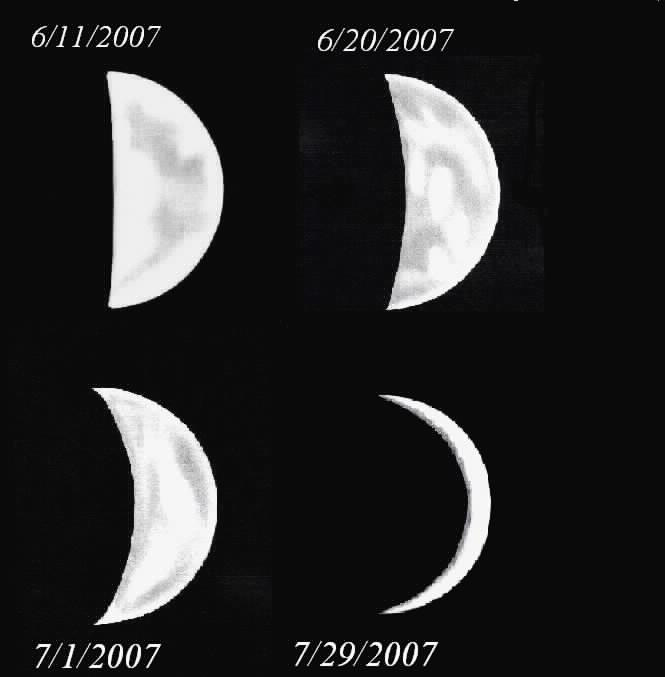In the 1950’s when I was a youngster, Venus was believed to be Earth-like not only
in size but in atmospheric conditions as well. Today it is known that Venus has
the hottest surface temperature of all the planets (457°C on average) and a high
pressure atmosphere of carbon dioxide and sulfuric acid. Venus is always shrouded
in clouds but its phase change and albedo features can be seen with a telescope.
The late spring and summer of 2007 have provided northern observers a great
opportunity to observe Venus in the west just after sunset. Within the week Venus
will reach inferior conjunction and begin to switch over to the morning sky as it
races past earth. Currently Venus is a thin crescent only 44 million km. from
earth and subtending an angular size of nearly 58 seconds of arc. Presently the
planet is too close in alignment with the sun for safe daytime observing but
beginning in September it will rise before the sun in the morning. The 4 drawings
above were made when Venus was between 103 and 51 million km from the Earth.
The first drawing was made with an 18” Newtonian telescope at 381x and the other
three were made with a 10” Newtonian at magnifications between 161x and 241x.
Deep violet, red and polarizing filters were used to bring out the albedo cloud features.
First drawing 7 pm local time June 11, 2007
Second drawing 8 pm local time June 20, 2007
Third drawing 5 pm local time July 1, 2007
Fourth drawing 2 pm local time July 29, 2007
Frank McCabe


Frank,
This is an excellent sequence of Venus sketches! Albedo features on Venus are difficult to capture, but you’ve done a marvelous job. Well done!
Jason
Jason,
Thank you. It was most helpful to have clear skies with good seeing and to look before dark.
Frank